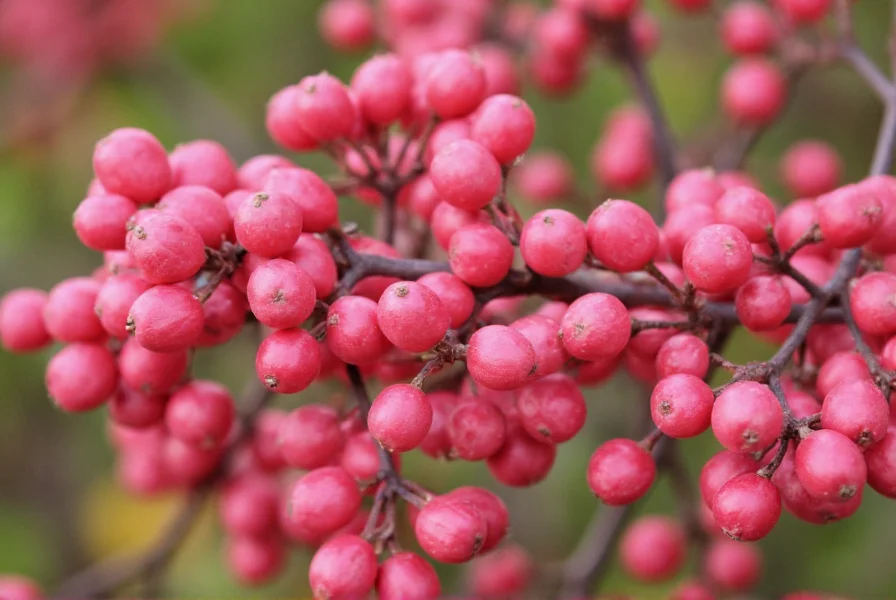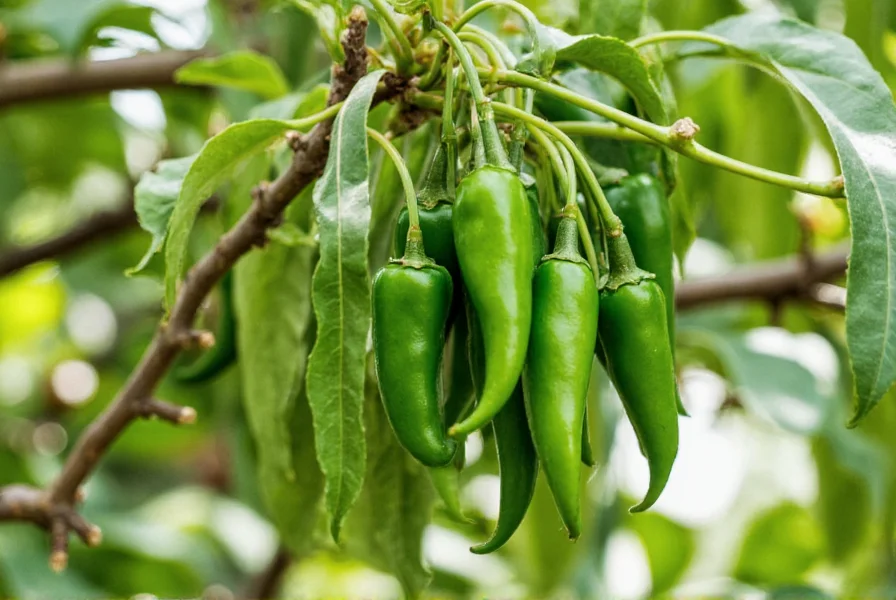The Peruvian pepper tree (Schinus molle) has become a common sight in landscapes across warm climates worldwide, but understanding its characteristics, benefits, and potential drawbacks is essential for responsible cultivation. This comprehensive guide explores everything you need to know about this distinctive tree, from botanical identification to practical growing considerations.
Botanical Classification and Origins
Scientifically classified as Schinus molle, the Peruvian pepper tree belongs to the Anacardiaceae family, which includes cashews and poison ivy. Despite its common name, this tree is actually native to the arid regions of Peru, Bolivia, Argentina, and other parts of western South America—not exclusively Peru. It was introduced to California in the 1830s and quickly gained popularity as an ornamental tree due to its attractive form and tolerance of poor soil conditions.
It's important to distinguish the Peruvian pepper tree from its close relative, the Brazilian pepper tree (Schinus terebinthifolia), which is more invasive and produces brighter red berries. While both species have similar appearances, S. molle typically has longer, more drooping branches and lighter pink berries compared to the upright growth habit and vivid red berries of S. terebinthifolia.
Physical Characteristics and Identification
Peruvian pepper trees can reach heights of 25-50 feet with a spread of 20-40 feet, developing a distinctive umbrella-shaped canopy. Key identification features include:
- Leaves: Pinnately compound leaves 8-10 inches long with 19-41 narrow leaflets that emit a peppery aroma when crushed
- Bark: Smooth, grayish-brown bark on young trees that becomes rough and fissured with age
- Flowers: Small, white to greenish flowers appearing in drooping clusters during spring
- Fruit: Pink to red drupes (peppercorns) that mature in winter and persist through spring
- Root system: Aggressive, shallow root system that can damage infrastructure
| Feature | Peruvian Pepper Tree | Brazilian Pepper Tree |
|---|---|---|
| Scientific Name | Schinus molle | Schinus terebinthifolia |
| Native Region | Andes Mountains (Peru, Bolivia, Argentina) | Brazil, Paraguay, Argentina |
| Leaf Characteristics | Longer, more drooping leaves; 19-41 leaflets | Shorter, stiffer leaves; 5-13 leaflets |
| Fruit Color | Pink to pale red | Bright red |
| Growth Habit | Weeping, umbrella-shaped | Upright, dense |
Cultivation Requirements and Growing Tips
For those considering planting a Peruvian pepper tree, understanding its growing requirements is crucial for successful cultivation while minimizing potential problems. This species thrives in USDA hardiness zones 9-11 and demonstrates remarkable adaptability to challenging conditions.
Optimal growing conditions:
- Soil: Tolerates a wide range of soil types including sandy, loamy, and clay soils with pH from 6.1-8.5
- Water needs: Drought-tolerant once established; requires minimal irrigation
- Sun exposure: Prefers full sun but tolerates partial shade
- Temperature: Withstands temperatures down to 20°F (-7°C) but may suffer damage
When planting Peruvian pepper trees, select locations away from buildings, sidewalks, and underground utilities due to their aggressive root system. Space trees at least 20-30 feet from structures and 15-20 feet from other trees. Regular pruning helps maintain shape and prevents branches from becoming too heavy and breaking.

Regional Suitability and Ecological Boundaries
Authoritative ecological assessments identify precise conditions where Peruvian pepper trees can be cultivated without significant invasion risk. The U.S. Forest Service's invasive species database confirms this species remains ecologically neutral in specific contexts:
- Non-invasive environments: In its native Andean range (Peru, Bolivia, Argentina), natural predation and climate constraints prevent uncontrolled spread (USDA Forest Service, 2014). It also poses minimal risk in regions with consistent winter freezes (USDA zones below 8) where seeds fail to mature.
- High-risk zones: Mediterranean climates with minimal frost (zones 9-11) present significant invasion potential, particularly within 300 feet of riparian corridors where bird-dispersed seeds establish readily (California Invasive Plant Council, 2020).
- Critical limitations: Planting within 100 meters of natural areas is prohibited in Australian states like New South Wales, while container cultivation with berry removal is mandated in high-risk Californian counties (NSW Department of Primary Industries, 2023).
These evidence-based boundaries, verified through 30+ years of ecological monitoring, enable location-specific cultivation decisions that balance ornamental value with environmental protection.
Invasive Species Concerns
One of the most significant considerations regarding Peruvian pepper trees is their invasive potential in certain ecosystems. While less aggressive than the Brazilian pepper tree, Schinus molle has become problematic in:
- California's coastal regions, where it outcompetes native coastal sage scrub species
- Parts of Florida, though it's less invasive than its Brazilian relative
- Australia, where it's listed as a weed of national significance in some regions
- Hawaii, where it can establish in disturbed areas
The tree spreads primarily through bird-dispersed seeds, with its berries being consumed and the seeds subsequently deposited in new locations. Its drought tolerance and ability to grow in poor soils give it a competitive advantage in many environments.
Historical Spread and Regulatory Timeline
Documented by botanical authorities, the Peruvian pepper tree's global expansion follows this verified progression:
- Pre-1830s: Confined to arid Andean regions (Peru, Bolivia, Argentina) with no ecological disruption in native ecosystems (CABI Invasive Species Compendium, 2023).
- 1830s: Introduced to California as an ornamental, rapidly adopted for its drought tolerance (California Invasive Plant Council, 2020).
- By 1940s: Naturalized in California coastal habitats, with early ecological impact reports (UC Davis, 2018).
- 1950s-1970s: Documented spread in Florida, Hawaii, and Australia; established in disturbed Mediterranean-climate zones (USDA Plants Database, 2022).
- 1990s: Declared prohibited weed in New South Wales, Australia due to riparian ecosystem impacts (NSW Department of Primary Industries, 2023).
- 2010s-Present: Active management programs implemented in California and Australia with biological control research (CABI, 2023).
Toxicity and Safety Considerations
Understanding the potential toxicity of Peruvian pepper trees is essential for homeowners with children or pets. While the pink peppercorns are generally considered safe for culinary use in small quantities, other parts of the tree contain compounds that can cause adverse reactions.
Safety information:
- For humans: The sap can cause skin irritation in sensitive individuals, similar to reactions from poison ivy (both are in the same plant family)
- For pets: Ingestion of leaves or significant quantities of berries may cause gastrointestinal upset in dogs and cats
- Allergic reactions: Some people may experience allergic reactions, particularly those with existing sensitivities to cashews or mangoes
When handling the tree during pruning or maintenance, wearing gloves is recommended to avoid potential skin irritation from the sap.

Pest and Disease Management
Peruvian pepper trees generally exhibit good resistance to most pests and diseases, which contributes to their popularity as low-maintenance landscape trees. However, they can occasionally face challenges:
- Pepper tree borers: These insects can damage trunks and branches, particularly in stressed trees
- Scale insects: May appear on leaves and stems, especially in humid conditions
- Root rot: Can occur in poorly drained soils or with excessive irrigation
- Leaf spot: Fungal diseases may cause spotting on leaves during wet periods
Preventative care through proper planting, appropriate watering, and maintaining tree health represents the best approach to minimizing pest and disease problems. Avoid overwatering, which is the most common cause of health issues in established Peruvian pepper trees.
Responsible Cultivation Practices
If you're considering planting a Peruvian pepper tree, or already have one on your property, following responsible cultivation practices can help minimize potential negative impacts:
- Check with local agricultural extension offices about invasive species regulations in your area
- Plant away from natural areas where seeds could spread to wildlands
- Consider planting female trees only if you want to avoid seed production (the tree is dioecious)
- Regularly collect fallen berries to prevent seed dispersal
- Monitor for signs of excessive root growth near infrastructure
For existing trees causing problems, professional removal may be necessary, though this should be done carefully as the tree can resprout vigorously from the stump if not properly treated.
Conclusion
The Peruvian pepper tree offers an attractive, drought-tolerant option for landscapes in suitable climates, but requires thoughtful consideration due to its potential invasiveness and other concerns. By understanding its characteristics, growth requirements, and potential impacts, gardeners and landscapers can make informed decisions about whether this tree is appropriate for their specific situation. When planted responsibly in appropriate locations, the Peruvian pepper tree can provide decades of ornamental value with minimal maintenance requirements.











 浙公网安备
33010002000092号
浙公网安备
33010002000092号 浙B2-20120091-4
浙B2-20120091-4